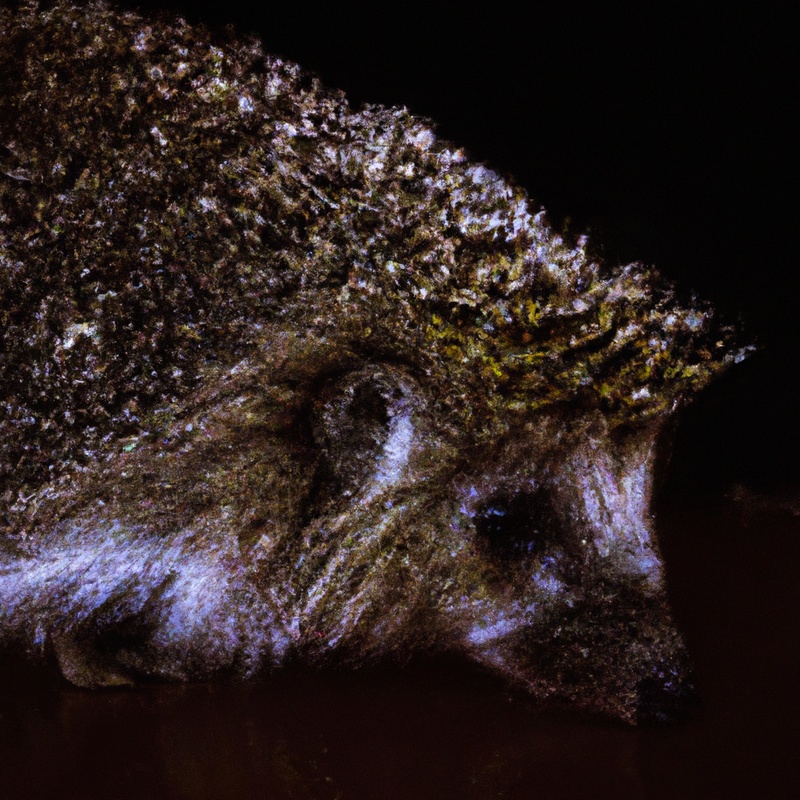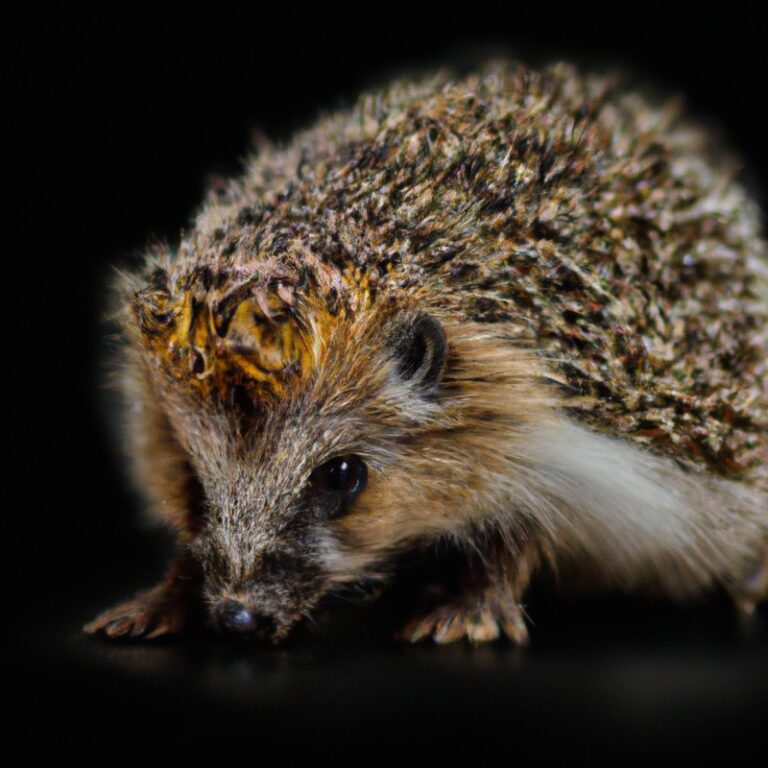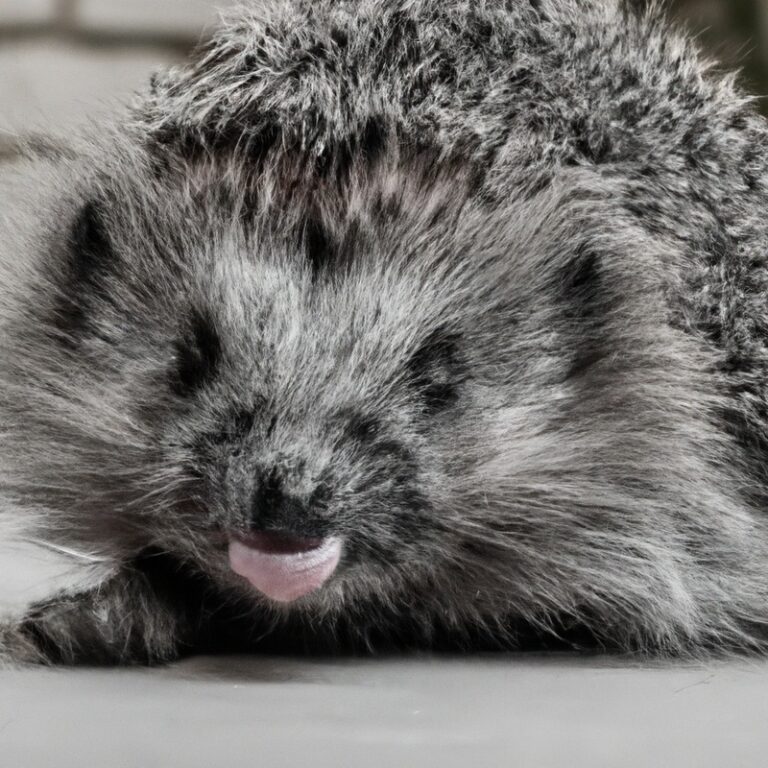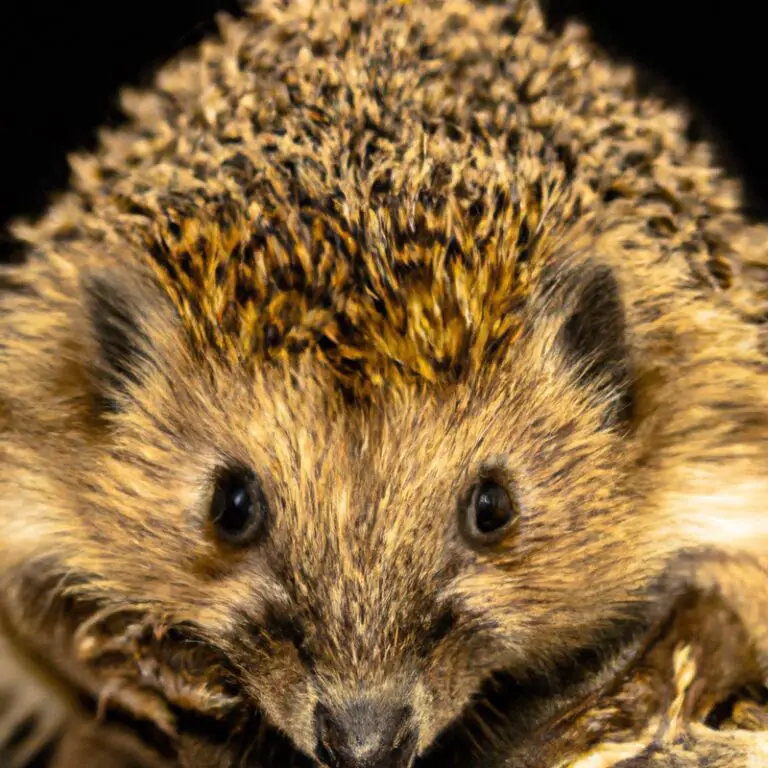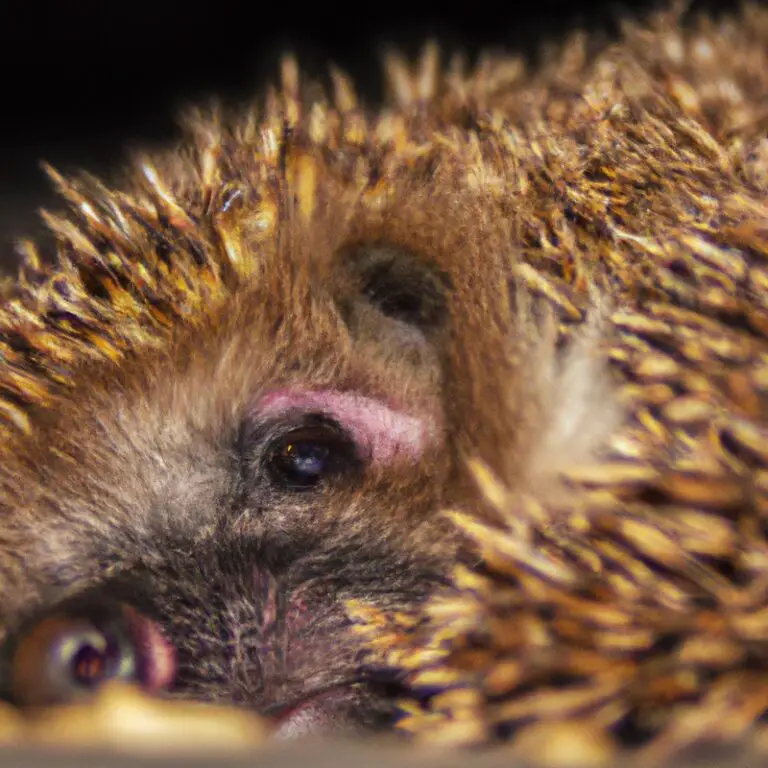What Is The Role Of Hedgehogs In Maintaining Ecosystem Balance?
Key Takeaways:
- Hedgehogs play a crucial role in maintaining ecosystem balance by controlling populations of harmful insects and pests.
- These small mammals help to promote biodiversity by dispersing seeds and aiding in pollination.
- Hedgehog activity can improve soil quality and nutrient cycling, benefiting overall ecosystem health.
- Protecting hedgehog habitats is essential for preserving the delicate balance of our natural ecosystems.
Have you ever stopped to wonder about the unsung heroes that quietly work behind the scenes to maintain the delicate balance of our ecosystems?
Enter the humble hedgehog! These adorable creatures may seem small and unassuming, but they play a vital role in the health and harmony of their habitats.
From their insect-eating prowess to their seed-dispersing abilities, hedgehogs are nature’s little helpers.
In this article, we’ll dive into the fascinating world of hedgehogs and explore their indispensable contributions to maintaining ecosystem balance.
Get ready to be amazed by these spiky allies!
| Role of Hedgehogs in Maintaining Ecosystem Balance |
Overview of Hedgehogs
Hedgehogs play an important role in maintaining ecosystem balance. They are small, spiny mammals known for their insect-eating capabilities.
Description and Characteristics of Hedgehogs
Hedgehogs are small, spiky mammals that are known for their distinctive appearance.
They have a round body covered in sharp spines or quills, which serve as their defense mechanism against predators.
Hedgehogs are primarily nocturnal animals, meaning they are most active during nighttime.
They have a keen sense of smell and hearing, which help them navigate their surroundings and locate food.
Hedgehogs are omnivorous creatures, feeding on a variety of insects, small vertebrates, fruits, and plants.
They play an important role in the ecosystem as they help control the population of insects and serve as prey for larger predators.
Hedgehogs are also known for their ability to hibernate during the winter months to conserve energy.
Natural Habitat and Distribution
Hedgehogs are adaptable creatures and can be found in a variety of habitats across the world.
They are typically found in grasslands, woodlands, and gardens, where they can find a good supply of food and shelter.
Hedgehogs have a wide distribution, with different species being found in different parts of the world.
They can be found in Europe, Asia, Africa, and New Zealand.
Hedgehogs are able to thrive in urban areas as well, making use of gardens and parks as their habitat.
Hedgehogs as Insectivores
Hedgehogs play an important role as insectivores in maintaining ecosystem balance.
Hedgehogs’ Diet and Feeding Habits
Hedgehogs are insectivores, which means their diet primarily consists of insects. They have a diverse feeding repertoire and can eat various invertebrates such as beetles, worms, snails, and spiders.
Hedgehogs are also known to eat small vertebrates like frogs and mice.
Their feeding habits include foraging for food at night, using their sharp teeth and strong jaws to capture and consume their prey. Hedgehogs’ diet and feeding habits play a crucial role in controlling pest populations and maintaining the balance of the ecosystem.
Impact of Hedgehogs on Insect Population Control
Hedgehogs play a vital role in controlling insect populations in ecosystems. They are natural insectivores, feasting on a variety of insects like beetles, slugs, and even some harmful pests.
By consuming these insects, hedgehogs help to maintain a balance in the ecosystem.
They prevent the unchecked proliferation of certain insect species that could become a nuisance or cause damage to plants and crops. Hedgehogs are like natural pest controllers, making them valuable allies in insect population control.

Seed Dispersal by Hedgehogs
Hedgehogs play a role in seed dispersal by spreading seeds as they move through their environment.
Hedgehogs as Seed Scatterers
Hedgehogs play a crucial role in seed dispersal as they move around the ecosystem.
As they forage for food, hedgehogs unwittingly scatter seeds from the plants they consume.
This helps with the spread of plant species and promotes biodiversity.
Their role as seed scatterers aids in the maintenance and balance of the ecosystem.
With hedgehogs’ natural movement patterns and their affinity for consuming various plant species, they contribute to the growth and regeneration of vegetation in different areas.
By doing so, they help ensure the health and resilience of the ecosystem over time.
Role of Hedgehogs in Promoting Plant Biodiversity
Hedgehogs play an important role in promoting plant biodiversity. They help with seed dispersal by eating fruits and berries, then depositing the seeds in different locations through their droppings.
This helps to spread the seeds and allows for new plants to grow in various areas.
By doing so, hedgehogs contribute to the overall health and diversity of plant species within an ecosystem. Their presence helps to maintain a balance and ensure the continuation of different plant species.
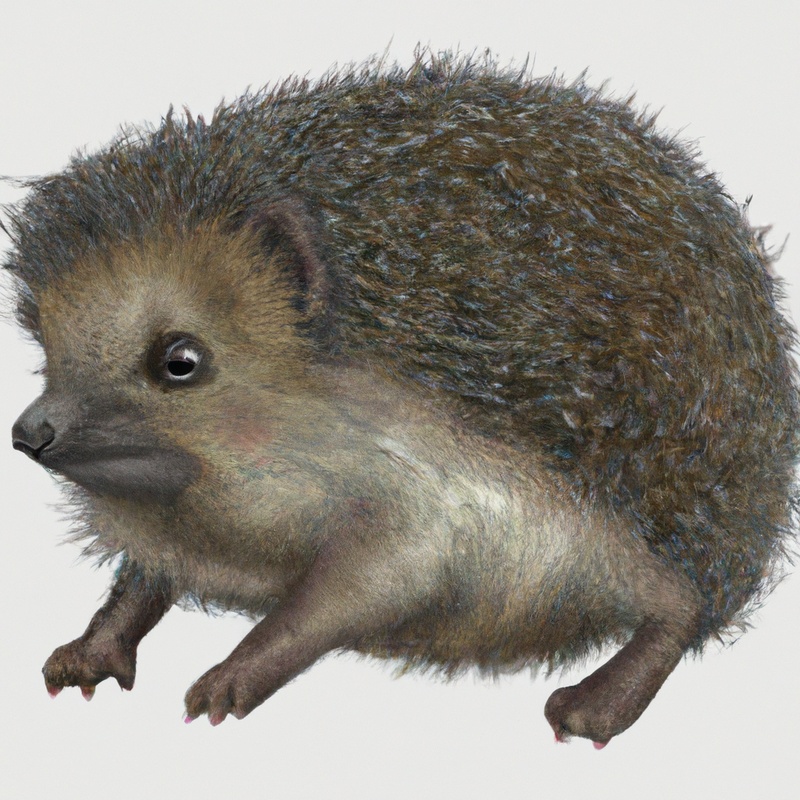
Hedgehogs as Prey
Hedgehogs serve as prey for various predators in the ecosystem, playing a vital role in the food chain.
Predators of Hedgehogs
Hedgehogs may be cute and prickly, but they also have their fair share of predators.
These predators include larger mammals such as foxes, badgers, and domestic dogs.
Birds of prey, such as owls and eagles, are also known to snatch up hedgehogs.
Even snakes and large insects have been known to feast on these little critters.
When it comes to protecting themselves, hedgehogs rely on their spiky exterior and their ability to curl up into a ball.
But unfortunately, these defenses aren’t always enough to ward off their hungry predators.
So, if you ever come across a hedgehog in the wild, it’s best to admire it from a distance and let it go about its business.
Significance of Hedgehogs as Prey in Food Chains
Hedgehogs play a crucial role as prey in food chains. They are often consumed by larger animals, such as owls, foxes, and badgers.
By being a part of the food chain, hedgehogs contribute to the balance and stability of the ecosystem.
Their presence provides a food source for predators, which helps control population levels and maintain a healthy ecological system. Additionally, hedgehogs help recycle nutrients in the environment through their consumption of insects and other invertebrates.
Hedgehogs and Soil Health
Hedgehogs play a role in maintaining soil health through their digging behavior and soil aeration.
Hedgehogs’ Digging Behavior and Soil Aeration
Hedgehogs’ digging behavior plays a vital role in soil aeration. As these cute creatures search for food, they dig into the ground, helping to loosen compacted soil.
This process allows air and water to circulate, improving soil fertility and nutrient availability for plants.
Additionally, the tunnels created by hedgehogs provide habitats for other beneficial organisms like earthworms, which further enhance soil health. So, these small mammals contribute significantly to maintaining ecosystem balance through their digging behavior and promoting soil aeration.
Relevance of Hedgehogs in Maintaining Soil Fertility
Hedgehogs play a significant role in maintaining soil fertility. They are natural pest controllers, feeding on insects and slugs that can harm plants.
By reducing the population of these pests, hedgehogs help protect the roots of plants and prevent damage to crops.
Additionally, hedgehogs contribute to soil health through their droppings, which serve as natural fertilizer. Their feces are rich in nutrients that promote plant growth and enhance soil fertility.
So, having hedgehogs in an ecosystem can contribute to a balanced and healthy soil environment.
Conservation of Hedgehog Populations
To ensure the conservation of hedgehog populations, efforts must be made to protect and enhance their habitats and address the threats they face.
Threats to Hedgehogs’ Survival
Hedgehogs face several threats to their survival in our modern world. Habitat loss is a major one, as urbanization and land development destroy their natural homes.
Traffic poses a significant danger, as many hedgehogs are killed or injured while navigating roads and streets.
Pesticide use also presents a risk, as these chemicals can harm hedgehogs and decrease their food sources. Additionally, the fencing used to enclose gardens can prevent hedgehogs from moving freely and finding food.
Finally, the presence of predators, such as dogs, cats, and badgers, can negatively impact hedgehog populations.
It is important for us to be aware of these threats and take steps to protect these adorable creatures.
Measures to Protect and Enhance Hedgehog Populations
To protect and enhance hedgehog populations, there are several measures you can take. Firstly, create a hedgehog-friendly garden by providing access points, such as small holes in fences, for them to travel between gardens.
Avoid using chemicals and pesticides on your garden to ensure their safety.
Secondly, leave wild areas or piles of leaves and logs for hedgehogs to shelter and nest in. Lastly, help raise awareness by educating your community about the importance of hedgehogs and encouraging others to take action to protect them.
Frequently Asked Questions
What do hedgehogs eat?
Hedgehogs eat a variety of foods, primarily insects such as worms, beetles, and caterpillars.
They also enjoy snacking on slugs, snails, and spiders.
Occasionally, they may eat small vertebrates like mice or frogs.
Additionally, hedgehogs are known to devour fruits and berries when they are available.
Do hedgehogs make good pets?
Hedgehogs can make good pets, but they may not be suitable for everyone.
Here are some important things to consider if you’re thinking about getting a hedgehog as a pet:
- Hedgehogs have specific care needs: They require a specialized diet, a proper enclosure, and regular veterinary check-ups. It’s crucial to understand their unique requirements before bringing one home.
- Hedgehogs can be timid: While some hedgehogs can be friendly and sociable, others may be more reserved and shy. It’s important to spend time bonding with your hedgehog to build trust and create a positive relationship.
- They have specific handling requirements: Hedgehogs have quills, which can be prickly. It’s essential to handle them gently and properly to avoid any discomfort or injuries.
- Hedgehogs are nocturnal: They are most active at night, which means they may not be suitable for individuals who prefer a pet that is awake and active during the day.
- Allergies and local regulations: Before getting a hedgehog, check if you or anyone in your household has allergies to them. Additionally, ensure that hedgehogs are legal to own as pets in your area, as some places have restrictions.
Remember, hedgehogs require commitment, time, and effort to provide them with a suitable and enriching environment.
It’s important to do thorough research and consult with experienced hedgehog owners or veterinarians before making a decision.
How do hedgehogs defend themselves?
Hedgehogs have several defense mechanisms to protect themselves from predators.
Firstly, they have sharp spines covering their body, which they can raise and create a barrier.
Secondly, when threatened, they curl into a tight ball, with their spines facing outwards, making them difficult to attack.
Thirdly, hedgehogs can produce a range of sounds, such as hissing or snorting, to warn off predators.
Additionally, they may also bite or perform a “puff and hiss” behavior to intimidate potential threats.
These adaptations help hedgehogs survive in the wild and ensure their defense.
Final Verdict
Hedgehogs play a vital role in maintaining ecosystem balance through their insectivorous diet, seed dispersal capabilities, serving as prey, and promoting soil health. They control insect populations, promote plant biodiversity through seed dispersal, serve as a crucial part of food chains, and contribute to soil aeration and fertility.
However, hedgehog populations are facing threats, and it is important to take measures to protect and enhance their numbers.
As stewards of the environment, we must recognize the value of hedgehogs and work towards their conservation for a well-balanced ecosystem.

